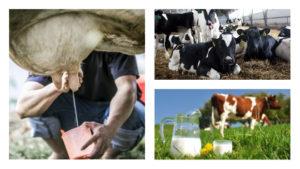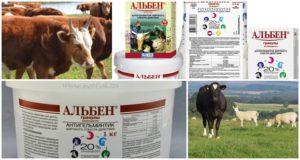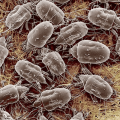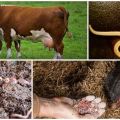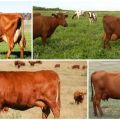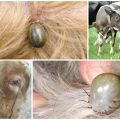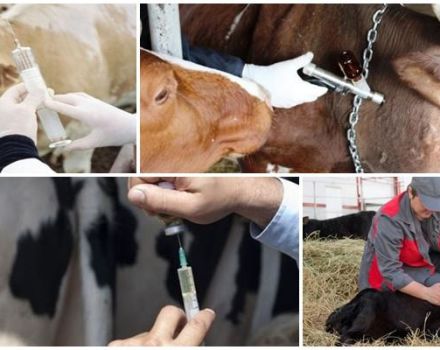Means and medicines for treating cows from ticks at home
Ticks are considered one of the most dangerous blood-sucking animals for animals, as they cause infection with serious infections. Medicines and tick prophylaxis for cows can help heal animals and prevent bites. The key to the health and full development of the cow is a timely diagnosis, the appointment of the correct treatment regimen.
Why are bloodsuckers dangerous for cows?
Ticks when bitten can provoke the development of various diseases in cows. The danger to animals is represented by blood-sucking: ixodid, scabies, subcutaneous, skin. The most common diseases carried by arthropods are:
- piroplasmosis - in an animal 2-3 weeks after the bite, a temperature of 41-43 ° C appears, appetite disappears, digestive functions are disturbed, the liver is affected. Milk exhibits bitterness and a reddish tint. Without medical assistance, a cow dies on 4-5 days;
- psoroptosis is caused by a bite on the skin. Symptoms: thickenings appear on the body, causing severe itching, body temperature rises, hair falls out, areas of bare skin appear;
- encephalitis - the incubation period lasts one to two weeks. However, symptoms of infection can appear as early as 4-5 days. The animal has lesions of the central nervous system (convulsions, paresis of the extremities), inhibited state, body temperature rises.
If the infection is not diagnosed in a timely manner, animals most often die. Milk and meat products obtained from sick cattle are also dangerous to humans.
Which areas are most often attacked
The greatest activity of bloodsucking is observed in about 16 regions. Ticks begin their active life from late January to early February. Cattle breeders of Crimea, Krasnodar and Stavropol Territories are the first to encounter cattle tick bites.
It is known that ticks become active with warming. The global increase in air temperature contributes to the increase in the activity of arthropods. And the problem is starting to affect livestock breeders in other areas. Also, the boundaries of endemic areas are beginning to expand due to animal migration, as ticks infect animals with viruses, and the latter, in turn, transmit viruses to other ticks.
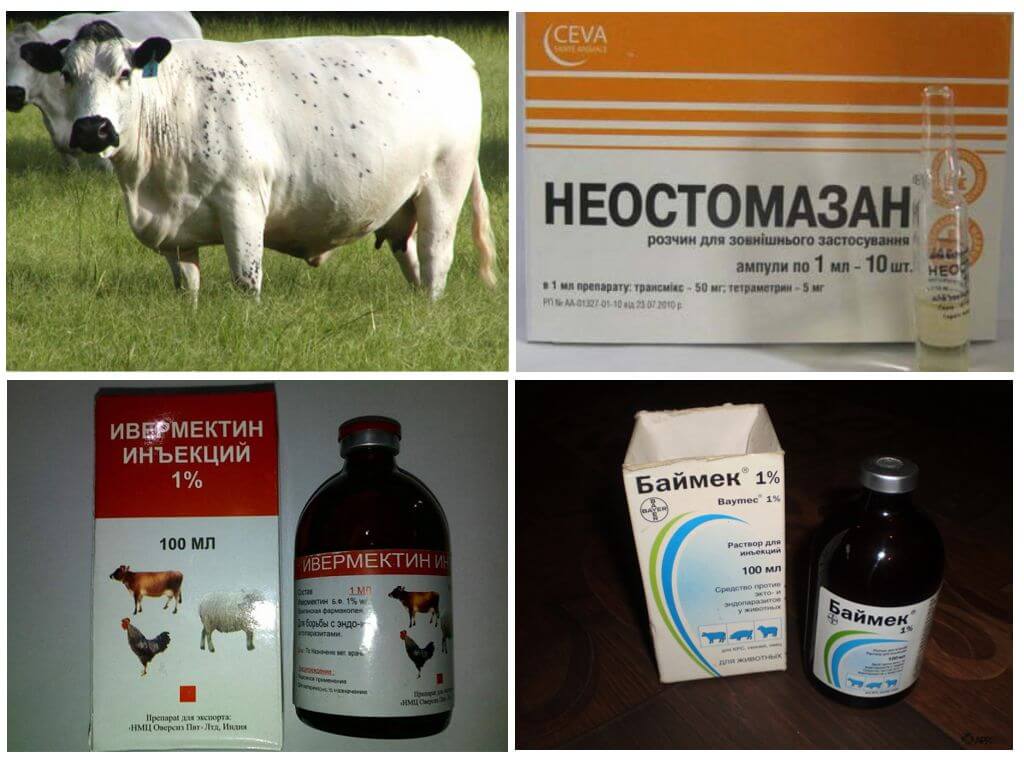
Methods for protecting cattle from ticks
Untimely detection of blood-sucking on the body of a cow leads to the development of dangerous diseases. To determine the treatment regimen, it is important to correctly diagnose the disease.
In order to avoid mistakes, it is recommended to do laboratory tests.
Pharmacy preparations
When prescribing medications, the diagnosis, the cow's well-being, the nature of the course of the disease are taken into account. Common medications given for tick bites include:
- for the treatment of piroplasmosis, a single intramuscular injection of an aqueous solution of "Berenil" with a volume of 3.5 mg / kg of animal weight is prescribed. In severe cases, the injection is repeated, and hemodez is administered intravenously. Additionally, an injection of "Diamedin" is given intramuscularly at a dose of 1-2 mg per kg of cow weight. The disease causes vitamin B12 deficiency. It is important to make up for the deficiency - the vitamin is injected intramuscularly or added to the feed;
- before prescribing drugs for the treatment of psoroptosis, scraping is done from the skin. A common treatment regimen: Ivermek is injected intramuscularly. A 2% suspension of colloidal sulfur is used to treat the skin, and the body of the animal is sprayed with Psoroptol aerosol. For the treatment to be effective, the procedures are carried out within 7-15 days;
- injections of "Ivermectin" are made subcutaneously when the diagnosis of demodicosis is made. Small mites cause severe itching, exist in the sebaceous glands and reproduce actively. At the initial stage of the disease, the skin is treated with Akrodex aerosol. A good effect is observed when using the Sevin solution.

To protect the cow from ticks and remove them from the udder, ITALMAS VP MINT is used, the main active ingredient of which is mint essential oil. Pharmacy products are also often used as preventive measures. The most popular are: "Bayoflay" (oily liquid lubricate the body of a cow, duration of action - 28 days), aerosols "Centaur", "Alezan", dust "Sevina" (animals are treated monthly in the period April-October).
Folk remedies
Decoctions, homemade infusions are often used as preventive measures. Useful solutions can be made according to several recipes:
- an oil solution of tar is used to coat the animal's body (prepared in a ratio of 1 part of a solution of tar and 10 parts of oil);
- to remove blood-sucking, infusions of medicinal herbs are prepared. Of the strong-smelling plants, mint, wormwood, tansy are most suitable. To prepare a solution of wormwood, 20 g of dried leaves are poured with two glasses of hot water and boiled for 1-2 minutes. Animals are sprayed with chilled broth before grazing.
When preparing solutions, decoctions, you need to remember about the short-term period of exposure of funds to bloodsucking. Even strong-smelling sprays disappear from the skin of the cow after 2-3 hours. Therefore, to ensure long-term effective protection, it is recommended to treat animal skin with sprays recommended by a veterinarian.
Preventive measures and timely detection of ticks prevent the development of diseases in animals. Cattle requires special attention during the period of active life of arthropods. It is not recommended to treat cows on their own - be sure to seek help from a veterinarian.
